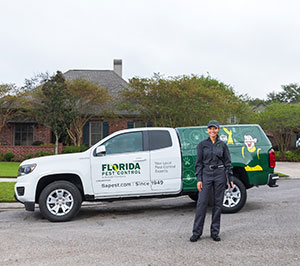Trustworthy A1 Bed Bug Exterminator Charlotte - Do Away With Bed Bugs Rapid
Bed Bug Treatment Failure: Comparing Chemical Vs. Non-Chemical Solutions
In the realm of insect control, specifically when handling the relentless concern of bed insects, the option in between chemical and non-chemical treatment remedies can be a crucial one. Both approaches use distinctive advantages and drawbacks, affecting elements such as efficiency, safety factors to consider, and general price. By examining the nuanced information of each method, a more clear understanding of which path to pursue in dealing with a bed bug infestation can be attained.
Effectiveness of Chemical Therapies
Chemical therapies for bed pest invasions have been extensively recognized for their potent and rapid efficacy in removing these bugs. When thinking about the efficiency of chemical therapies, it is important to understand that they can supply a fast and thorough option to a bed bug issue.
Furthermore, chemical therapies have the benefit of supplying recurring impacts, indicating that they can remain to get rid of bed insects also after the initial application. This residual activity is particularly helpful in combating any potential re-infestations. Furthermore, the fast activity of chemical treatments can bring alleviation to people facing extreme bed pest infestations, allowing them to reclaim control of their living areas promptly.
Safety And Security Worries With Chemical Solutions
One essential facet that needs mindful factor to consider when utilizing chemical solutions for bed insect treatment is making certain the safety and security of passengers and the atmosphere. Direct exposure to particular chemicals used in bed bug treatments can lead to breathing issues, skin irritability, or various other negative responses, especially in people with pre-existing conditions or sensitivities.
Moreover, the environmental influence of chemical services is an additional considerable consideration. Some pesticides used in bed pest treatments might be unsafe to valuable bugs, wildlife, and ecosystems if they leach into the soil or water supply. It is important to utilize chemical therapies sensibly, adhering to security guidelines, and taking into consideration less toxic alternatives to mitigate these dangers and ensure the secure and effective monitoring of bed bug invasions.
Benefits of Non-Chemical Methods
Considering the prospective security worries and ecological effect connected with chemical solutions for bed insect therapy, exploring non-chemical strategies presents an encouraging choice with a number of distinctive advantages. Non-chemical therapies are ecologically friendly, as they do not add to air or water contamination, making them a lasting selection for insect control.
Additionally, non-chemical options can be reliable in targeting bed insects, including hard-to-reach areas where chemical treatments might not pass through - A1 pest control services charlotte. Approaches such as warmth therapy, vacuuming, steam cleansing, and mattress encasements supply comprehensive eradication without the usage of harmful chemicals.
Limitations of Non-Chemical Treatments

In addition, non-chemical treatments commonly call for numerous applications to attain effective obliteration. This can be taxing and might not constantly guarantee total elimination of all bed insects and their eggs, specifically in hard-to-reach or hidden areas.
Moreover, the success of non-chemical treatments greatly depends on appropriate execution and thoroughness, which can be challenging for individuals without professional know-how. Insufficient application of non-chemical methods might result in incomplete elimination, leading to consistent problems and the requirement for additional therapies.
Consequently, while non-chemical therapies have their benefits, it is necessary to recognize these constraints and consider them when figuring out the most efficient approach for handling bed bug problems.
Cost Comparison: Chemical Vs. Non-Chemical Options
Offered the restrictions connected with non-chemical therapies, a vital facet to review in the context of bed pest administration is the price comparison in between chemical and non-chemical alternatives. Chemical therapies generally include the application of insecticides by experts, which can range from $250 to $900 per area, depending upon the severity of the infestation and the dimension of the location to be dealt with. In comparison, non-chemical therapies like warmth treatment or vapor can be much more expensive, with expenses ranging from $1,000 to $6,000 for an entire home. While the initial cost of chemical therapies might appear reduced, numerous therapies may be needed to completely get rid of the infestation, possibly have a peek at this website increasing the general expense. On the various other hand, non-chemical options may supply go to my blog a much more lasting and eco-friendly solution, although they can be cost-prohibitive for some people. Eventually, when thinking about the expense of bed pest therapy choices, it is very important to evaluate the upfront costs against the effectiveness and long-term sustainability of the selected method.
Final Thought

Considering the potential security problems and ecological impact connected with chemical services for bed insect treatment, checking out non-chemical methods offers an encouraging option with several distinct benefits.Provided the limitations linked with non-chemical therapies, an essential element to evaluate in the context of bed insect administration is the price comparison in between chemical and non-chemical options. In contrast, non-chemical therapies like warm therapy or steam can be extra pricey, with prices varying from $1,000 to $6,000 for an entire home. While the first price of chemical therapies might appear reduced, multiple therapies might be called for to fully remove the invasion, potentially raising the overall price.In final thought, when contrasting chemical and non-chemical bed insect treatment alternatives, it is necessary to take into consideration effectiveness, safety and security, advantages, constraints, and expense.